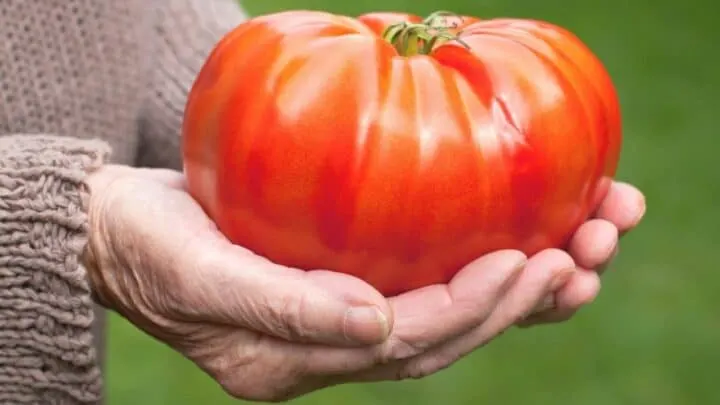How to Grow Giant Tomatoes. One of the sublime pleasures of summertime is biting into a bright-red, juicy tomato picked right from your garden.
Once you have tasted home-grown tomatoes, there is no going back.
A staple of Mediterranean cuisine, the tomato is a member of the Solanaceae, also known as the nightshade family.
Often mistaken for a vegetable, a tomato is a fruit.
They like basking in the sun’s glory for at least six hours daily and need plenty of water.
Tomatoes thrive in warm and aged-compost soils and temperatures between 55 and 85 degrees Fahrenheit (13 – 29 degrees Celsius).
Botanically, the tomato crop is known as Lycopersicon esculentum and is harvested annually.
It has a bushy, sprawling habit and reaches a height of 1 to 10 feet (12 to 120 inches), mostly with a width of 1 to 3 feet (12 to 36 inches).
The delicious crop forms densely branched vines with fleshy, hairy stems. The leaves are lobed and have a distinct scent.
The tomato plant also develops beautiful star-shaped yellow flowers that give rise to orange, red, yellow, purple, green, black, or pink fruit.
The fruits are usually oval, round, or pear-shaped, weighing similar to cherry to large beefsteak-like that weigh several pounds.
With fruit as complex and tasty as tomatoes, it is certain to have several types.
The most common types are Determinate or bush tomatoes, Indeterminate or vining tomatoes, and Semi-determinate or compact tomatoes.
Many gardeners are discouraged from growing tomatoes due to the great number of associated diseases such as bacterial leaf spot and insects that can infect and feed on the tomato plant.
However, if given the right care and extra love, you can grow the healthiest and most gigantic tomatoes.
How to Grow Giant Tomatoes
For growing the biggest tomatoes in town, get a variety known to grow giant tomatoes e.g. gold medal, big zac (hybrid), and German Red Strawberry. Such plants have favorable genetics and other characteristics that maximize the fruit’s size while keeping it healthy and nutritious. Ensure that it receives six to eight hours of sunlight per day. Water the plant once or twice daily, depending on the heat intensity. Select tomato plant varieties are known to grow giant tomatoes. Prune the plant to have a single stem supporting the giant tomatoes. Use chlorine-free water.
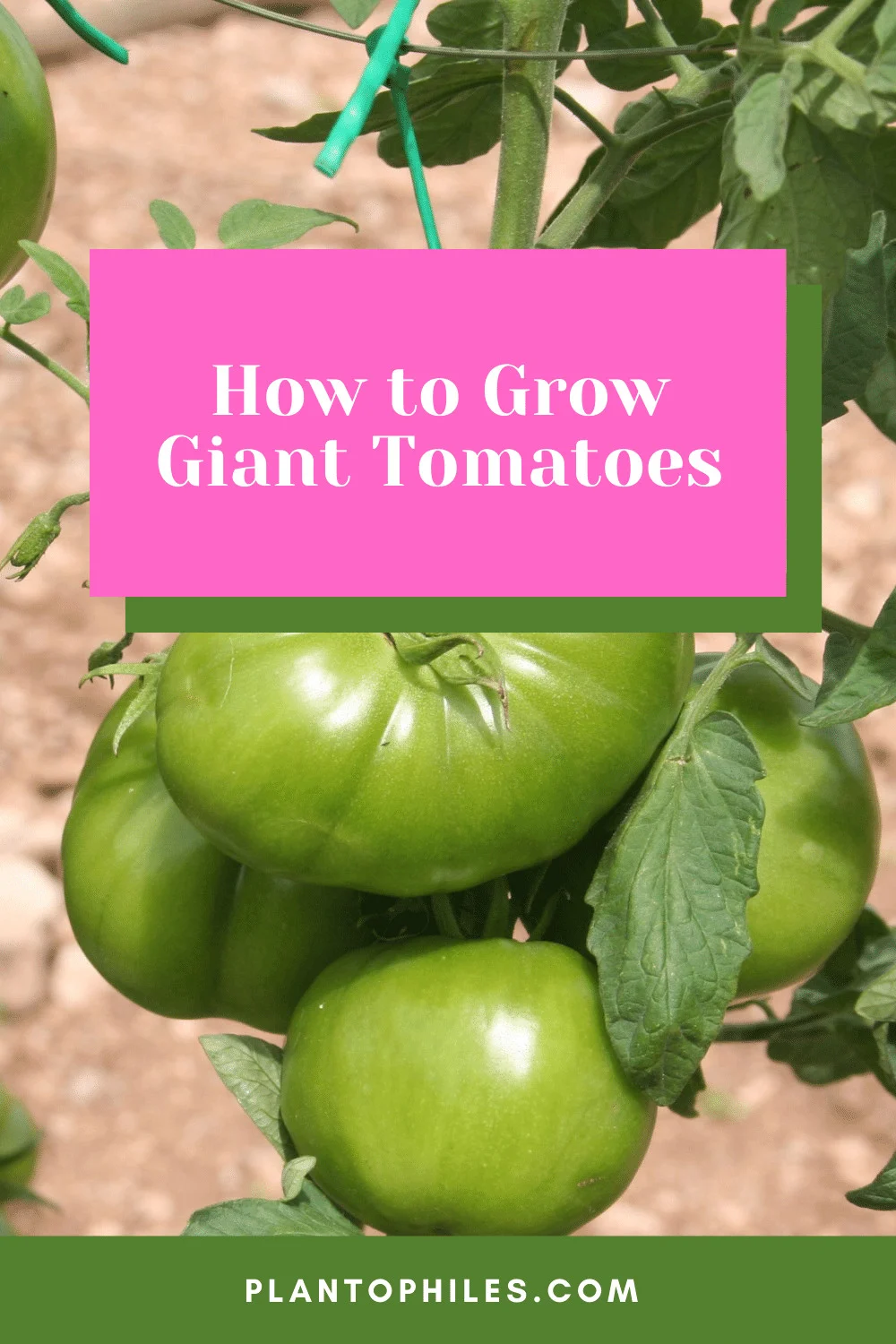
Table of Contents
How to Grow Giant Tomatoes Care Guide
Soil
The majority of a plant’s development and fruiting is dependent on the type of soil it is planted in.
Most tomato plants are not too fussy when it comes to soil types; however, things may start to complicate for you if they run dry.
I also suggest starting seeds early and using soil warmers, such as black plastic, for promoting giant tomato growth.
This nutritious crop prefers well-draining and airy soils that are rich, organic, and moist.
Due to the high frequency of watering needed by the plant, its soil must allow quick drainage from excess water.
A plant in stagnant water is quick to fall prey to various bacterial and fungal infections.
Tomato plants do exceptionally well in mildly acidic to neutral soils (5.8 to 7.0).
Anything lower or higher affects the plant adversely, causing the leaves to shrivel and become distorted.
In the fall season, make the ideal soil mix for your giant tomato plant by combining a handful of organic compost or brown leaves with regular soil.
Put this mixture into the upper 4 to 8 inches of the potting soil before planting the tomato plant.
During spring, dig out planting holes with a 5-gallon bucket; add half soil and half compost and pour this soil back into the planting hole.
Another method is to add some worm castings into the ground sometime before or after you plant the tomato plant.
This will ensure that there is a constant supply of organic compost for the crop to feed on.
If you do not want to add worm castings only, you can use a combination of work compost, worm castings, and aged manure.
The best way to protect your plant from damage is to avoid heavy clay-like soils.
Such soils often retain excess water and make an inviting path for several pathogens.
If you plan to use clay soil, add some sand or organic matter into it, such as peat moss or compost.
This will help your ground stay sufficiently moist without holding too much water.
Lastly, be patient and leave the tomatoes on the plant for a good amount of time.
Only pluck when the tomatoes are fully ripe and seem to be falling off the plant.
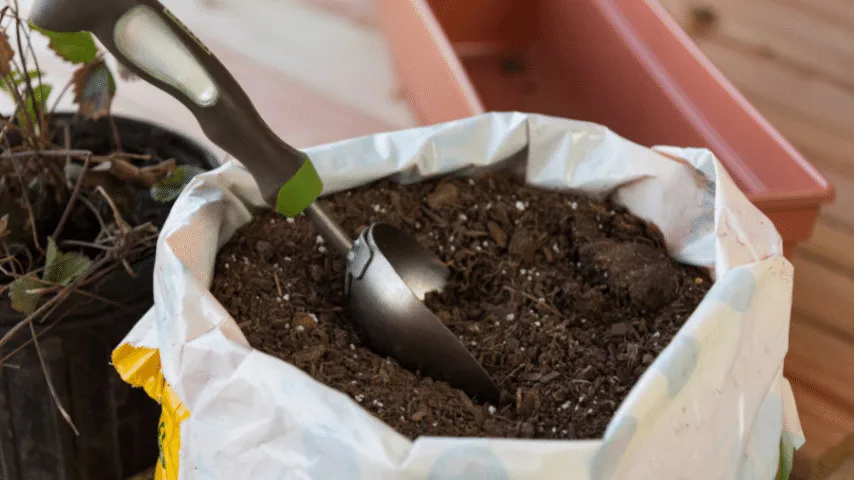
Watering
Anyone who has grown giant tomatoes or seen tomatoes growing for even a week knows that they love water.
They need frequent watering throughout the year and may even require watering twice a day during the hottest summer days.
The trick is to water the tomato plants but gradually, and not all at once so that the crop has plenty of time to absorb and evenly distribute it among its different parts.
The slow-watering method also encourages an efficient and deep rooting system that can obtain water even when the water table is low.
I suggest you irrigate the tomato plant in the morning and focus mostly on its roots and soil instead of putting water right upon its head.
The overhead watering promotes fungal infections as the water often does not run off the leaves or the fruits.
You can use the drip irrigation method for raised water-bed areas; this method is one of the most efficient water delivery systems for growing crops.
It carries water directly to the plant’s root system within the correct amount and time frame so that each plant receives its equal share.
The drip irrigation method also helps farmers and gardeners save water and its associated cost while producing higher and more profitable yields.
This ultimately saves the environment against water wastage and pollution.
If drip irrigation is not possible, opt for a plain oil soaker hose that delivers water to the roots without flooding your entire garden.
However, you will need to make sure that the hose’s direction is correct.
If your tomato plant is within a container, you may have to take relatively more care while watering, and once you are done, ensure that there is no excess water remaining in the tub.
For such plants, add water around the tomato plant’s base with a watering wand.
Moreover, using a well-draining container is essential. Problems arise when the tomato plant is underwatered, overwatered, or watered irregularly.
The most significant issue, especially in the case of tomatoes, is underwatering.
While excess and irregular watering are also serious, underwatering leads to a longer and more severe list of complications.
Underwatering will cause plant stress that begins with dehydration.
The plant gradually loses its turgidity and starts bending. Once a large amount of moisture is lost, it wilts.
Simultaneously, there is stunted growth and cessation of fruiting. Overwatering is almost as serious, if not more.
An overwatered plant has reduced immunity and is quick to catch infections, such as root rot, fruit infestation, and fungal disease.
While these problems are reversible, they can cause significant damage.
Irregular watering presents its own set of issues such as blossom drop, blossom rot, or fruit cracking.
Make a definite schedule for your tomato plant and follow it till your plant matures and is ready for harvest.
Furthermore, please use chlorine-free water to grow giant tomatoes.
If you have access to chlorinated water only, fill a large bucket with water and let it sit overnight, and use this.
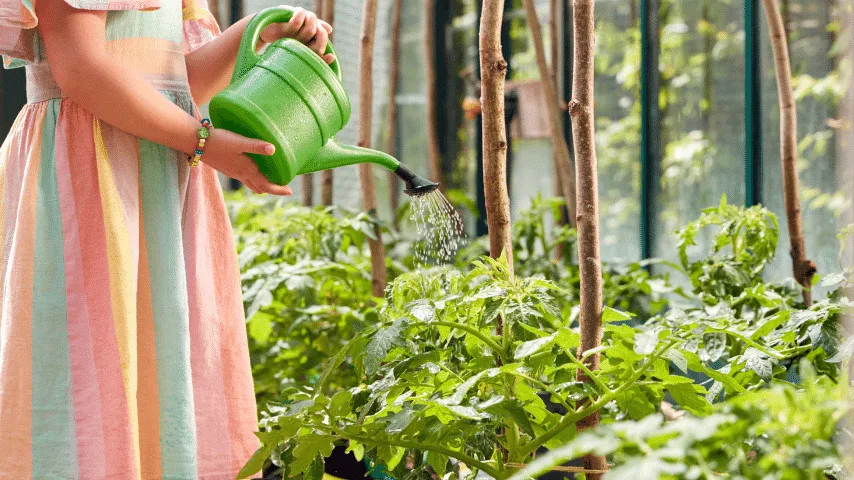
Light
The tomato plant loves unobstructed sunlight for at least six hours a day.
In inadequate sunlight, they often do not develop their characteristic color, or worse, develop discolored spots over themselves.
While providing your plant with full sunlight for six to eight hours a day indoors seems a little troublesome, it is not the case.
You can put your tomato plant at various spots around the house where unrestricted sunlight reaches it.
An east or south-facing window mostly offers the ideal amount of sunlight for sun-loving plants.
If you do not have a window that is large enough, simply place your tomato plant outside on the balcony.
While the unobstructed sunlight keeps the vines and foliage happy, the constant airflow in the balcony keeps your plant’s roots adequately moisturized.
If your tomato plant is growing outdoors, looking for a sunny spot will not be much of a hassle.
Just let it be wherever it is planted and it will store all the solar energy it needs and the tomato plant will grow just fine on its own.
Some gardeners may incline toward artificial growing lights. Although some hybrid species have grown well under them,
most natural species do not develop their characteristic appearance and taste under artificial lights.
Therefore, you should grow this beauty out in nature. While the sun plays a crucial role in the maturation of a tomato plant, too much of it can lead to sunburn.
Direct sun rays for longer than eight hours a day can lead to relatively quicker evaporation, even if temperatures are mild.
Overexposure to sun signs can be seen as wilting foliage, abnormal fruiting, and dropping off the plant.
The trick here is to keep an eye on the tomato plant for any of the mentioned signs.
If you spot any, immediately water your plant and keep it in partial shade temporarily until it’s back into its normal form.
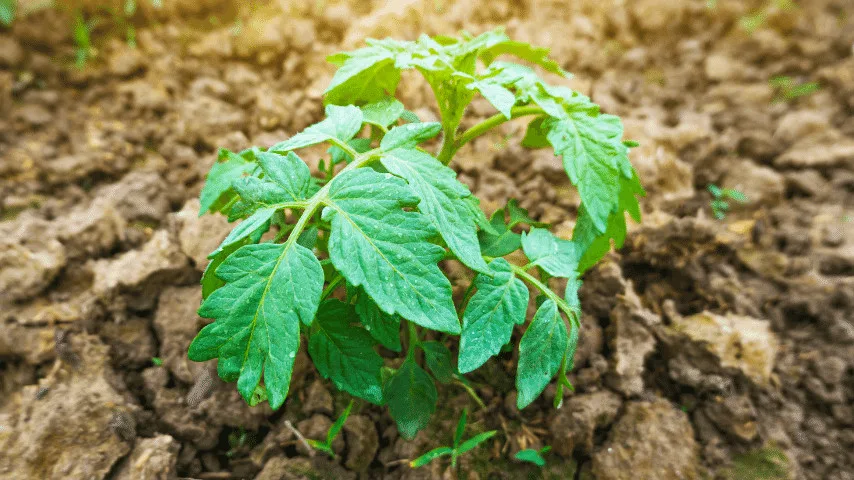
Temperature
Although fairly tolerable, some tomato plant species may react to unfavorable temperatures.
In most cases, temperatures range from 55 to 85 degrees Fahrenheit (13 degrees to 30 degrees Celsius).
The crop’s preferred range is mild to moderate temperatures; some varieties bear fruit at lower or higher temperatures only.
Therefore, you should inquire about the tomato seed type you are getting before planting it.
Usually, tomato plants quit producing fruit at temperatures beyond 95 degrees Fahrenheit (35 degrees Celsius).
Thus, please ensure that your plant is within its desired environment.
Humidity
The tomato plant loves water, and fairly so, it enjoys high moisture levels.
Anything below its desired levels dries out the plant leading to failure to thrive and inadequate fruit production.
It enjoys daytime humidity levels ranging from 80% to 90%, whether outdoors or indoors.
In contrast, nighttime moisture levels fall from 65% to 75% due to the decreased evaporation rate.
These levels are significantly high, especially if you have plants indoors in the same space as you.
In such a case, simply move your tomato plant into a separate room and add a humidifier, if necessary.
Fertilizer
Tomatoes are avid feeders and fast growers, and so they require a perpetual, stable feed supply.
For all types, a high-quality feed made explicitly for tomatoes or similar species works exceptionally well.
If the soil does not contain sufficient elements, it may also need other external supplements.
Fertilizers with good Nitrogen, Phosphate, and Potassium (NPK) ratios are preferred over others.
Moreover, trace minerals, such as magnesium and Sulphur, should also be added to the feed to increase production.
I suggest adding a premium-quality slow-release fertilizer at planting time over the plant’s roots or as is mentioned on the product packaging.
A balanced 10-10-10 (NPK) feed works wonders with the common tomato varieties. You can also opt for a blended formula.
If newly planted, get a tomato starter-fertilizer that promotes jump-start growth instead of the regular one.
The former is packed with a greater quantity of nutrients that are required during the early stages.
During this time, the plant is mostly dependent on the soil; therefore, packing it with elements is a good choice.
Once your tomato plant bears fruit, add fertilizer every 1 to 2 weeks.
A better option is to add some compost tea, fish emulsion, or other water-soluble organic fertilizers to enhance fruit production.
Trace elements, such as Sulphur and calcium, contribute to the smaller but vital reactions.
Therefore, please make sure that you add these elements to prevent mishaps such as blossom end rot.
To show extra love, add cottonseed meal, lime, bone meal, used coffee grounds, and eggshells into the soil periodically.
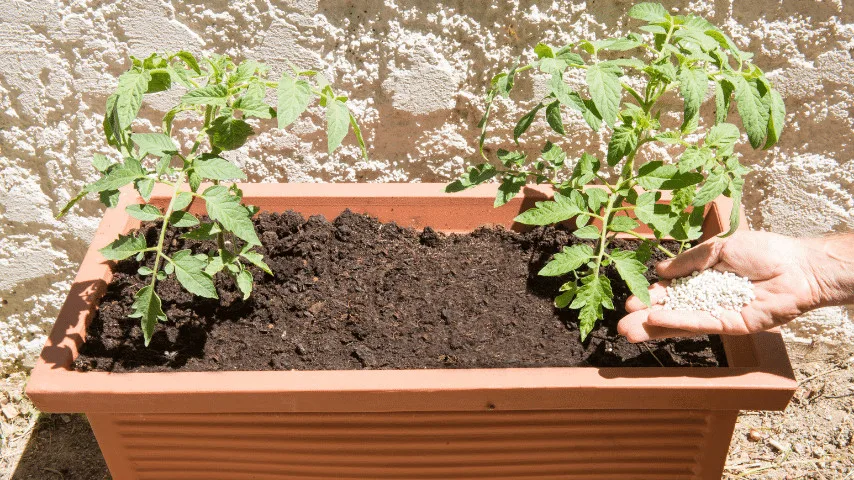
Repotting
Tomato plants grow fairly quickly; therefore, repotting them is necessary so that new growth is not restricted.
A rule of thumb is to repot the plant when it has grown three times the size of its pot.
Additionally, please make sure that you choose a pot that drains adequately, is spacious and is well-aerated.
If your plant has matured fully and has giant tomatoes hanging off its vines, you should provide some form of support to it.
I suggest using nylon stockings or old socks to prevent the tomatoes from falling off the plant.
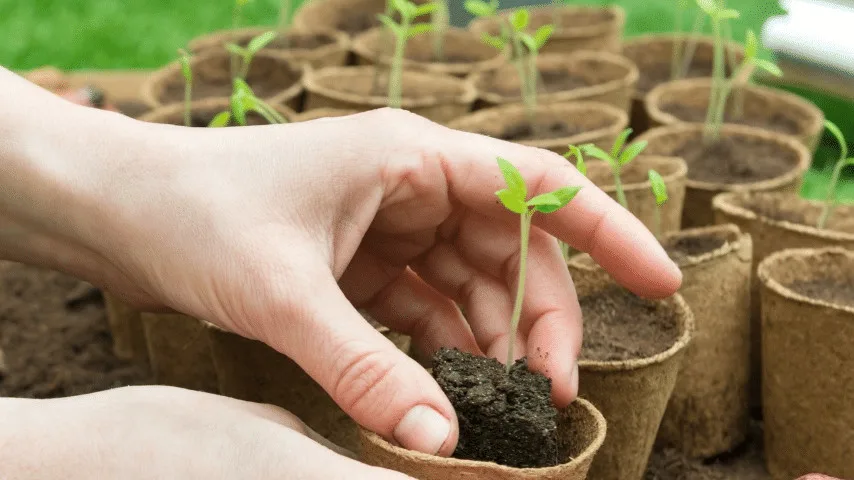
Pruning
When it comes to growing giant tomatoes, the pruning method is of immense importance.
I recommend getting rid of excess suckers and growing a single-stemmed tomato plant only.
This directs most energy and minerals to the mother plant leading to a healthier crop.
During pruning, gently pinch out the suckers growing between the main stem and its branches.
Also, trim out the lower branches so that water does not splash on the foliage, a frequent cause of fungal infections.
Furthermore, in the indeterminate tomato type, you can prune down to a single leader so that the plant grows along a string trellis or stake.
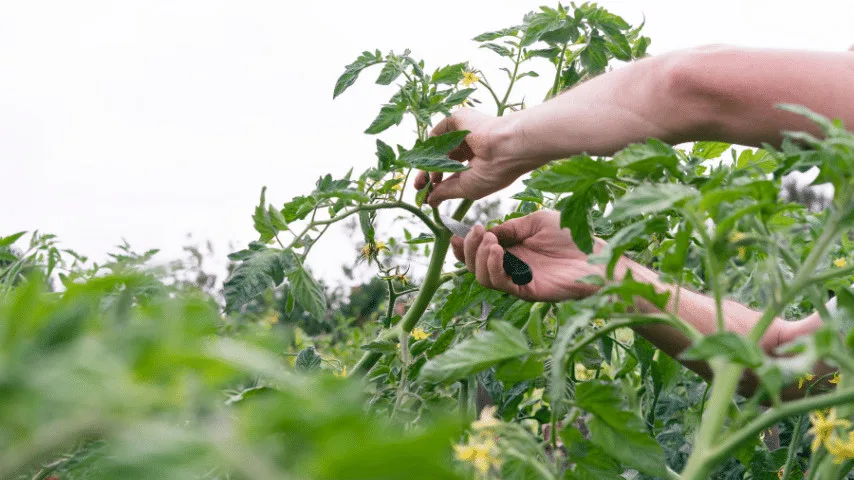
Propagation
You will need clean plant scissors, hand gloves, a mature tomato plant, water and fertilizer, and a new pot with good draining.
To grow one of the tastiest and most nutritious fruits, do the following:
- Clean all your tools and wear hand gloves.
- Take your healthy tomato plant and select a vine that is healthy and fresh.
- Cut this vine off with a pair of clean plant scissors. Make sure that you do not damage any surrounding foliage or stems.
- Preferably, select the vine that is 10 to 20 centimeters long.
- Remove the lower leaves from the cut vine gently.
- Get a well-draining pot that offers good aeration.
- Put the vine in the pot and add some water along with some fertilizer.
- Place this pot in a sunny spot.
You will notice new roots in about three to four weeks. During this time, keep adding fresh lukewarm water every day till the plant fully matures.
Once the plant overgrows its pot, transfer it into a bigger pot or plant into the ground ensuring that no vines touch the ground.
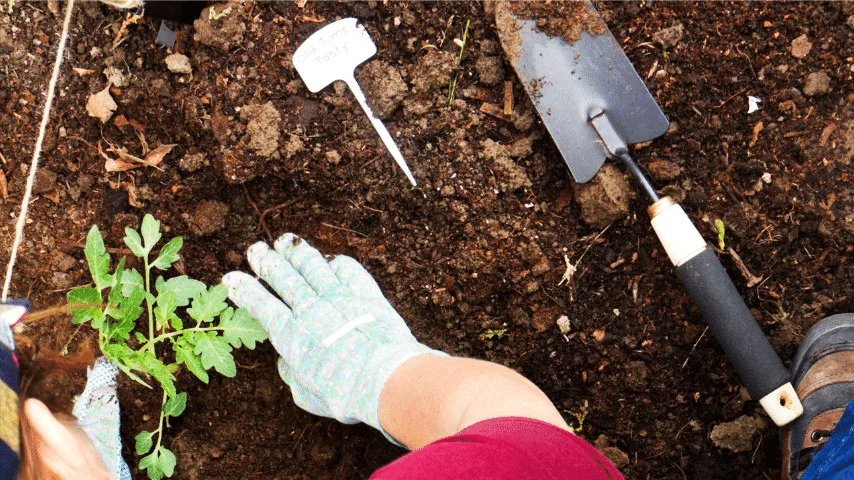
Blooms
The tomato plant forms vibrant star-shaped yellow flowers that give rise to orange, red, yellow, purple, green, black, or pink fruit.
The fruits are oval, round, or pear-shaped and weigh half an inch to several pounds.
The flowers are self-pollinating, and each has male and female parts both the stamens and pistil.
After fertilization, the tomato plant’s petals and stamens fall off, and the newly formed tomato further develops.
Unpollinated tomato flowers mostly die and drop.
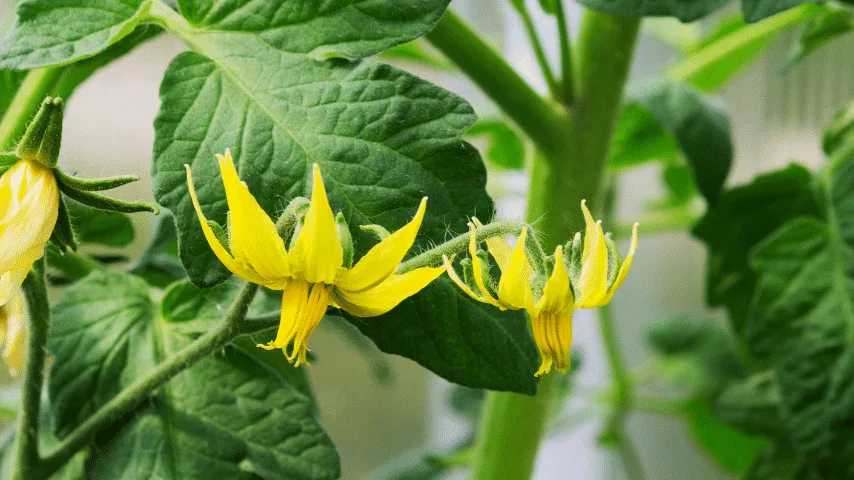
Growth
Different tomato varieties grow at different rates. The Early girl variety forms the quickest (52 days) while the Big boy takes the longest (78 days).
The plants have an overall fast growth rate and grow in a bushy, sprawling pattern. They are usually 1 to 10 feet tall and spread to 1 to 3 feet.
Common Problems for Tomato Plants
Insects and Pests
Pests and insects are usually the first to attack tomato plants, especially if they touch the ground.
Unless the damage is spotted immediately, it is often too late.
The most common attackers include Aphids, blister beetles, tomato fruit-worms, leafhoppers, cutworms, nematodes, and snails and slugs.
Unfortunately, no method offers 100% against these pests;
however, frequent checking and spraying can significantly lower the probability of an attack.
Most of these insects start by feeding on the plant’s foliage; therefore, keep a close eye.
Look for any color changes, abnormal spotting, rough or abnormal spiked edges, or cobwebs on the underside.
Similarly, you can check the soil surrounding your plant and spot worms, if present.
If you spot any of these signs, quickly spray your plant with an anti-fungal or bactericidal spray.
You can also rub neem oil on your plant’s leaves’ surfaces. I also recommend doing this routinely, even if your plant is not infested.
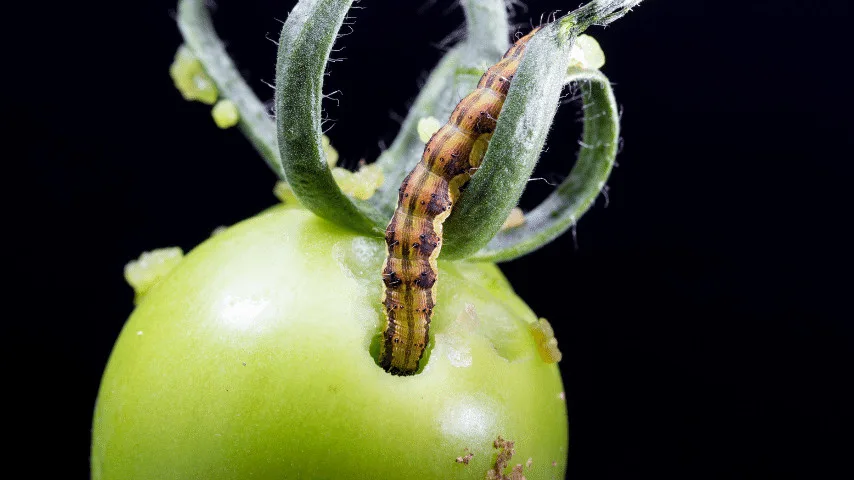
Infectious Diseases
The tomato plant is fairly disease-resistant; however, it is common for nectar-producing plants to catch infections relatively quicker than the non-nectar producing varieties.
As tomatoes produce abundant juice, they are often the favorite meal of several bacteria and fungi.
Most common diseases include early and late leaf blight, Septoria leaf spot, gray leaf spot, anthracnose, verticillium or bacterial wilt,
tobacco mosaic virus, damping-off disease, tomato spotted wilt virus, and tomato yellow-leaf curl virus.
Most infections are fungal and occur due to improper or irregular watering, inadequate sun exposure, poor air circulation, and excess humidity.
While these problems are serious, each is preventable and treatable.
To treat as well as prevent these diseases, simply revise your plant’s care schedule and modify what needs changes.
Once you get on the right track, your tomato plant is most likely to recover.
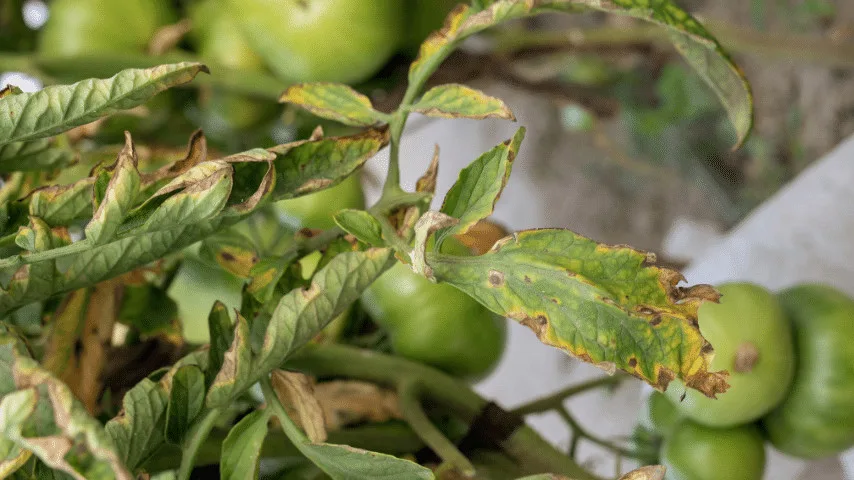
Other Problems
As lovely as the tomato plant and its fruit are, it comes with many problems and requires the close attention of the gardener.
Most harvesters recommend keeping the plant off the ground or growing it within a cage or upon a trellis to minimize the occurrence of infections.
Other frequent problems include blossom end rot, flower drop, leaf roll, poor fruit set, cat-facing, and fruit cracking.
Most of these issues can be fixed by following the ideal plant care guide and maintaining the tomato plant’s good hygiene.
Please keep the plant as well as its surroundings clean and remember to remove the weeds every one to two weeks, or as needed.
Tips for Growing Giant Tomato Plants
- Please ensure that it receives six to eight hours of sunlight per day
- Water the plant once or twice a day, depending on the heat intensity
- Select tomato plant varieties are known to grow giant tomatoes
- Prune the plant to have a single stem supporting the giant tomatoes
- Use chlorine-free water

Frequently Asked Questions About How to Grow Giant Tomatoes
Is it better to get a tomato plant initially or a seedling?
If you are an experienced gardener knowing well about tomato species, buy seeds that suit your area’s environment and are disease-resistant.
However, if you are a novice, starting with a tomato plant is better so that you know what to expect and how to care for it correctly.
How do I know which tomato variety suits my area best?
To make a definitive assessment, get several varieties with good disease resistance. Some easy tomato varieties include Early girl – which produces fruit in 52 days (indeterminate),
Better boy – highly disease resistant and grows within 70 days (indeterminate), Celebrity-sets fruit in 72 days, and Big boy – bears the highest yield in about 78 days (indeterminate).
How many tomatoes should I ideally plant?
It is mostly dependent on the gardener’s preference; however, planting two tomatoes per member is sufficient if you are planting them for each member of the family.
If you plan to make or process tomato salsa, plant four tomatoes per member.
Conclusion On How to Grow Giant Tomatoes
Grow the largest tomatoes by selecting varieties like Gold Medal, Big Zac, and German Red Strawberry. Ensure 6-8 hours of sunlight, daily watering, and proper spacing. Prune to a single stem for support. Use chlorine-free water. Follow these steps for successful giant tomato cultivation!

Daniel has been a plant enthusiast for over 20 years. He owns hundreds of houseplants and prepares for the chili growing seasons yearly with great anticipation. His favorite plants are plant species in the Araceae family, such as Monstera, Philodendron, and Anthurium. He also loves gardening and is growing hot peppers, tomatoes, and many more vegetables.

